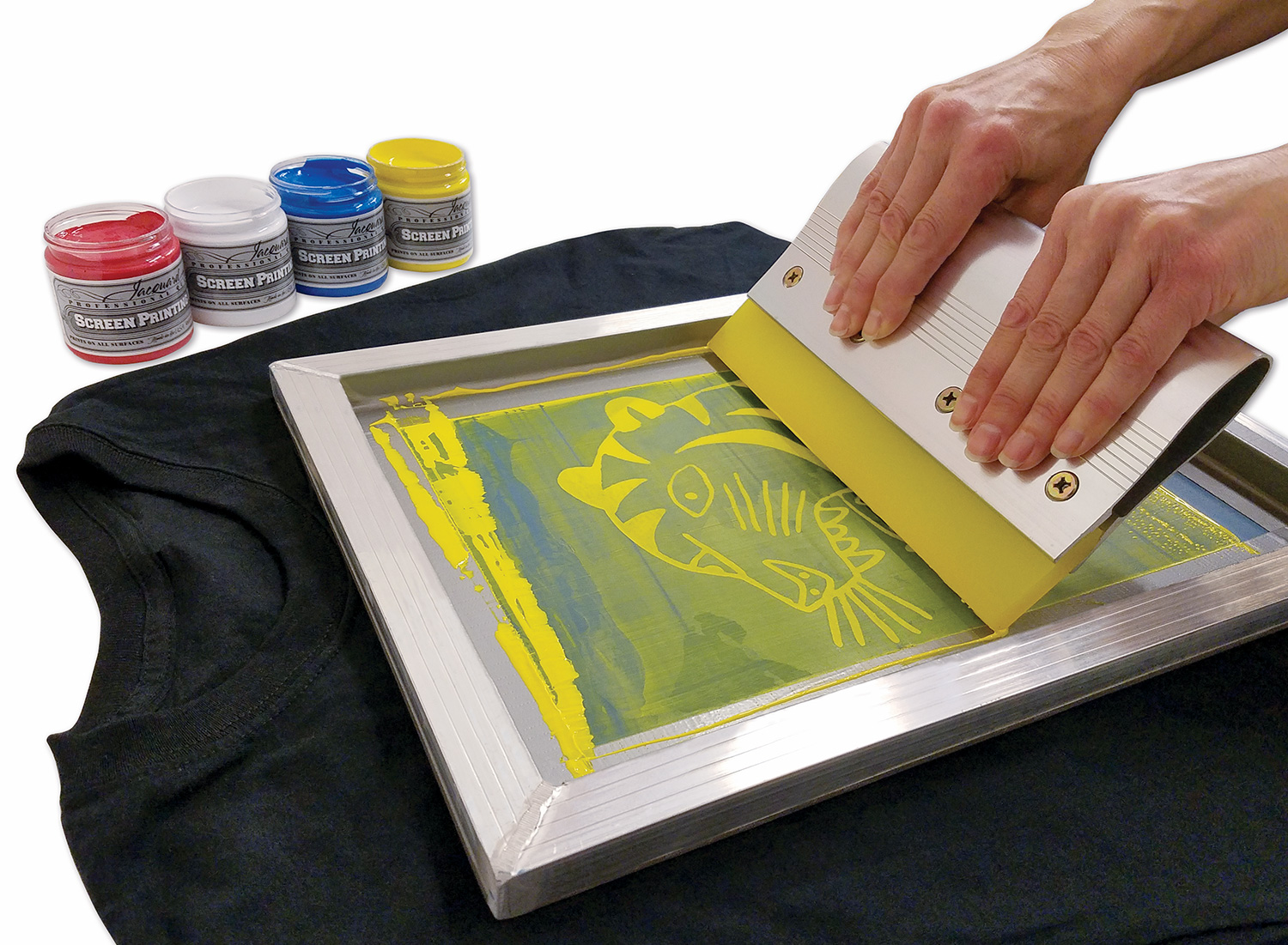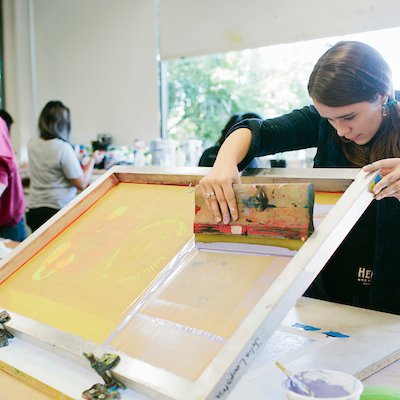ChatGPT said: How to customize your apparel with 10:9 Design Screen Printing in 3 easy steps
The Vital Overview to Comprehending Screen Printing and Its Versatile Utilizes
Screen printing has an abundant background that dates back to ancient times, developing into an advanced method used across various industries today. This overview discovers the details of the screen printing procedure, describing its applications in style, advertising and marketing, and home style - 10:9 Design reviews. Recognizing these basics can open up imaginative capacity for both industrial and artistic jobs. The following areas will reveal crucial ideas and methods to boost one's screen printing ventures
The History of Screen Printing
Screen printing has roots that map back centuries, its development reflects the technological and artistic innovations of various societies. Coming from in old China, the method was originally utilized for embellishing textiles and later spread to Japan, where it ended up being essential to Ukiyo-e woodblock printing. The approach changed to Europe in the 18th century, where it obtained popularity among artisans and commercial printers. The creation of photo emulsion in the 20th century changed screen printing, enabling even more complex designs and better efficiency. Artists like Andy Warhol additionally moved its appeal, making use of the medium to produce iconic works that mixed commercialism and art. By the late 20th century, screen printing had developed itself as a functional technique, employed in vogue, marketing, and art. Today, it remains to progress, integrating digital innovation and broadening its applications across different industries.
The Screen Printing Process Explained
Screen printing changes artistic visions right into substantial layouts through a series of accurate steps. At first, a picture is developed and afterwards moved onto a screen, generally made from great mesh material extended over a structure. A light-sensitive emulsion is applied to the screen, which is subjected to light, setting in locations not covered by the image. After rinsing the unhardened emulsion, a stencil is created.
Next off, the screen is positioned over the substratum, whether it be textile, paper, or one more product. Ink is then pressed with the open locations of the pattern utilizing a squeegee, depositing the layout onto the substrate listed below. This process can be repeated for numerous shades, calling for different screens for each and every tone. Finally, the printed item is cured using heat to guarantee the ink sticks appropriately, causing a durable, dynamic style on-line.
Kinds Of Screen Printing Techniques

In addition, specialty methods, such as discharge screen printing, get rid of color from the material to create softer prints, while aluminum foil screen printing uses metal aluminum foil to achieve a shiny surface (10:9 Design near me). Each technique offers unique qualities, dealing with various creative demands and manufacturing scales, ultimately increasing the opportunities within the screen printing domain name
Applications of Screen Printing in Various Industries

Additionally, the signs and advertising and marketing markets make use of screen printing for developing distinctive display screens and banners. This approach enables vibrant shades and elaborate layouts that capture interest. In electronic devices, screen printing is employed for using conductive inks to motherboard, essential for component connections. Moreover, the home design market embraces screen printing to produce unique designs on fabrics and wall art. Generally, screen printing serves as a crucial tool throughout diverse fields, enhancing items with individualized and visually appealing graphics.
Tips for Effective Screen Printing Projects
While undertaking a screen printing project, mindful focus to detail can considerably enhance the final end result. First, choosing top notch materials is vital; this consists of the screen, inks, and substrates. Utilizing ideal mesh counts can impact ink deposition and detail resolution. Preparation is just as essential; detailed cleansing of screens and correct exposure times assure crisp prints.
Next off, accurate registration is important for multi-color prints. Making use of alignment tools can assist attain specific layering. Additionally, testing prints on scrap products before production helps determine prospective concerns without squandering resources.

Regularly Asked Questions
What Products Are Ideal for Screen Printing on Textile?
Cotton and polyester blends are suitable for screen printing on material because of their toughness and ink absorption. In addition, specialty textiles like silk or canvas can generate special textures and finishes, boosting the total layout top quality.
Just how Do I Clean and Maintain Screen Printing Tools?
To preserve and cleanse screen printing equipment, one need to consistently wash displays with appropriate solvents, check mops for wear, lubricate moving components, and store all things in a dry, dust-free atmosphere to lengthen their lifespan.
What Are the Environmental Effects of Screen Printing?
Screen printing can have substantial ecological effects, including chemical waste from solvents and inks, water usage throughout cleaning procedures, and energy usage. Lasting methods and environmentally friendly products are important for lessening these negative impacts.
Can Screen Printing Be Done in the house Effectively?
Screen printing can be efficiently done at home with the best materials and techniques. Enthusiasts can develop quality prints, though success depends on their ability level, equipment, and understanding of the process involved.
What Are the Expenses Related To Beginning a Display Printing Organization?

Starting a screen printing organization involves costs for equipment, products, and work area. Preliminary expenses typically vary from a few hundred to numerous thousand dollars, depending on the range, quality of equipment, and desired manufacturing capacity.
Screen printing has an abundant history that dates back to old times, developing right into an advanced technique made use of across numerous markets today. Another strategy, rotary screen printing, employs round displays, facilitating continual printing on material rolls, thereby boosting effectiveness for large manufacturings. Additionally, specialty techniques, such as discharge screen printing, remove color from the material to create softer prints, while aluminum foil screen printing uses metallic aluminum foil to accomplish a shiny coating. In the fashion field, screen printing is extensively used to develop lively designs on clothing, enabling brands to showcase their special styles. Cotton and polyester blends are ideal for screen printing on fabric due to their longevity and ink absorption.